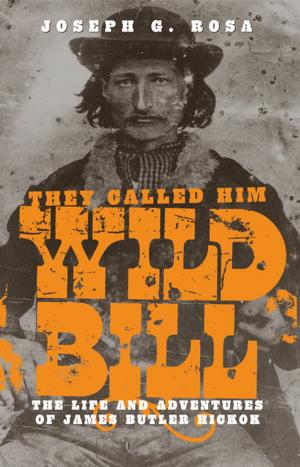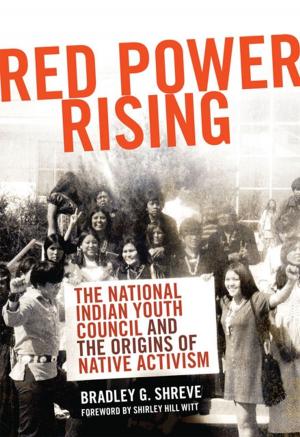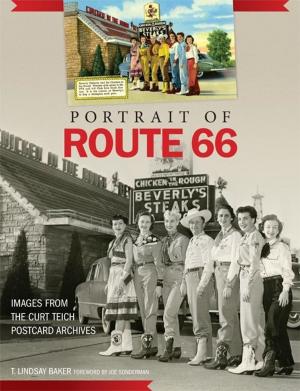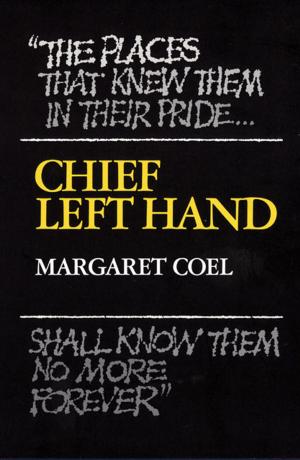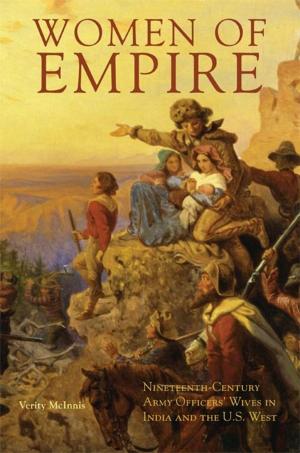Soldiering in the Shadow of Wounded Knee
The 1891 Diary of Private Hartford G. Clark, Sixth U.S. Cavalry
Nonfiction, History, Americas, Native American, United States, 19th Century, Military| Author: | Hartford G. Clark | ISBN: | 9780806156408 |
| Publisher: | University of Oklahoma Press | Publication: | October 20, 2016 |
| Imprint: | University of Oklahoma Press | Language: | English |
| Author: | Hartford G. Clark |
| ISBN: | 9780806156408 |
| Publisher: | University of Oklahoma Press |
| Publication: | October 20, 2016 |
| Imprint: | University of Oklahoma Press |
| Language: | English |
In the aftermath of the December 1890 massacre at Wounded Knee, U.S. Army troops braced for retaliation from Lakota Sioux Indians, who had just suffered the devastating loss of at least two hundred men, women, and children. Among the soldiers sent to guard the area around Pine Ridge Agency, South Dakota, was twenty-two-year-old Private Hartford Geddings Clark (1869–1920) of the Sixth U.S. Cavalry. Within three days of the massacre, he began keeping a diary that he continued through 1891. Clark’s account—published here for the first time—offers a rare and intimate view of a soldier’s daily life set against the backdrop of a rapidly vanishing American frontier.
According to editor Jerome A. Greene, Private Clark was a perceptive young man with wide-ranging interests. Although his diary begins in South Dakota, most of its entries reflect Clark’s service at Fort Niobrara, located amid the sand hills of north-central Nebraska. There, beginning in February 1891, five troops of the Sixth Cavalry sought to protect area citizens from potential Indian disturbances. Among his hard-drinking fellow soldiers, “Harry,” as Clark was called, stood out as a teetotaler. He was also an avid horse racer, huntsman, and the leading pitcher on Fort Niobrara’s baseball team.
Beyond its descriptions of a grueling training regimen and off-duty entertainment, the diary reveals Clark’s evolving perception of Native peoples. Although he initially viewed them as savage enemies, Private Clark’s attitude softened when the army began enlisting Indian men and he befriended a Lakota soldier named Yellow Hand, who shared Clark's love of sports.
Drawing on his extensive knowledge of nineteenth-century military history, Greene offers a richly annotated version of Private Clark’s remarkable original text, replete with information on the U.S. Army’s final occupation of the American West.
In the aftermath of the December 1890 massacre at Wounded Knee, U.S. Army troops braced for retaliation from Lakota Sioux Indians, who had just suffered the devastating loss of at least two hundred men, women, and children. Among the soldiers sent to guard the area around Pine Ridge Agency, South Dakota, was twenty-two-year-old Private Hartford Geddings Clark (1869–1920) of the Sixth U.S. Cavalry. Within three days of the massacre, he began keeping a diary that he continued through 1891. Clark’s account—published here for the first time—offers a rare and intimate view of a soldier’s daily life set against the backdrop of a rapidly vanishing American frontier.
According to editor Jerome A. Greene, Private Clark was a perceptive young man with wide-ranging interests. Although his diary begins in South Dakota, most of its entries reflect Clark’s service at Fort Niobrara, located amid the sand hills of north-central Nebraska. There, beginning in February 1891, five troops of the Sixth Cavalry sought to protect area citizens from potential Indian disturbances. Among his hard-drinking fellow soldiers, “Harry,” as Clark was called, stood out as a teetotaler. He was also an avid horse racer, huntsman, and the leading pitcher on Fort Niobrara’s baseball team.
Beyond its descriptions of a grueling training regimen and off-duty entertainment, the diary reveals Clark’s evolving perception of Native peoples. Although he initially viewed them as savage enemies, Private Clark’s attitude softened when the army began enlisting Indian men and he befriended a Lakota soldier named Yellow Hand, who shared Clark's love of sports.
Drawing on his extensive knowledge of nineteenth-century military history, Greene offers a richly annotated version of Private Clark’s remarkable original text, replete with information on the U.S. Army’s final occupation of the American West.





